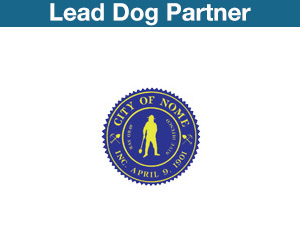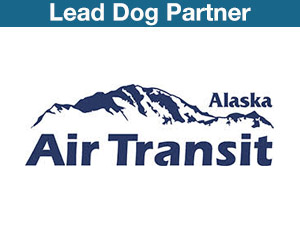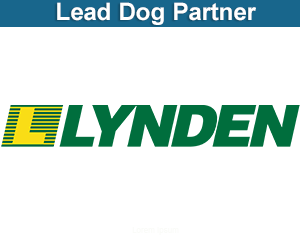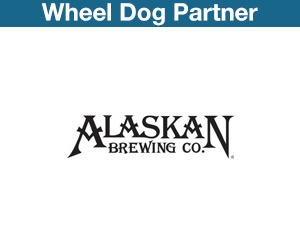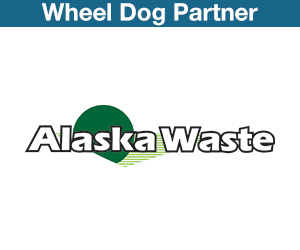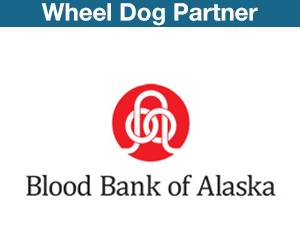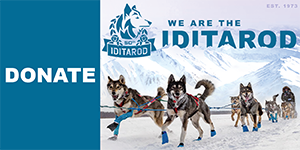
Bright neon doggie booties. Photo by Kimberly Henneman.
Marathon or distance sled dogs run and pull sleds in a variety of conditions that include spending nights out on the trail. Sometimes those conditions can change quickly, going from sunny and above freezing to snowing and well below zero within a few hours. Because of the need to protect in all kinds of weather, mushers not only have many choices to help protect themselves, but also have the similar options for their dog partners.
Here are some of what they wear and why:

Miranda from Kelley Maxinier’s team, Nome 2012. Photo by Kimberly Henneman.
Booties: Every sled dog fan is used to seeing dogs run in all kinds of colored booties, from neon yellow to pink to green, depending on the musher’s preferred colors. Sled dogs run on such varied types of snow and ice that booties are put on feet to prevent abrasions from ice crystals and the formation of clumps of snow on the foot hairs. Mushers will replace booties at every checkpoint or more frequently, as needed. Think of how many booties any one musher racing Iditarod must go through and how much time it takes to put booties on a whole team. Yet, every musher does it to ensure that their dogs’ feet stay healthy and strong.
Light-colored windbreakers: The combination of running in the direct sun, particularly for a darkly colored dog, along with the heat generated from that work, can result in overheating relatively quickly. Therefore, on sunny, calm days, many mushers will put white windbreakers on the darker colored dogs to help reflect the sun.
T-shirts: These are worn to help prevent chaffing from a harness, especially on the chest or in the armpits. Many mushers make their own t-shirts and often pick special race colors.
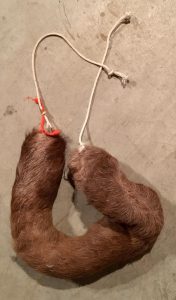
Caribou belly ruff/protector for male dogs. Photo by Kimberly Henneman.
Jackets: When the weather turns colder and/or if a team is running in strong winds, mushers will put their dogs in quilted, insulated jackets. Jackets not only help to protect from cold temperatures but will also act as windbreakers. Jackets may be left on for sleeping, as well.
Gaiters: A gaiter is a sleeve or cloth tube that goes onto a dog’s front legs and is secured by a strap that goes from one to the other over the shoulders – much like a suspender. They are worn only when the temperatures get really cold. In very low temperatures, ice crystals kicked up by a dog’s front feet can build up on the back of the leg. As you watch the Iditarod, you will start to see mushers put gaiters on their dogs when running on the Yukon River, a frozen highway that often has temperatures 15-20 degrees F colder than the surrounding banks. Temperatures on the Yukon can run as low as -60 with strong winds.
Belly ruffs (or belly bands): While dogs’ feet are resistant to frostbite (thanks to an amazing network of toe pad blood vessels), the prepuce of male dogs is more susceptible to the cold. In very low temperatures, particularly when accompanied by wind, mushers will loosely wrap a belt made from fluffy wool or natural fur around a male dog’s belly to help protect its prepuce from frostbite or kicked up ice crystals.
Disclaimer: The Content is not intended to be a substitute for professional veterinary medical advice, diagnosis, or treatment. Always seek the advice of your veterinarian with any questions you may have regarding a medical condition for your pet.







